-
Posts
1,636 -
Joined
-
Last visited
-
Days Won
1
Content Type
Profiles
Forums
Gallery
Events
Blogs
Posts posted by glowingturnip
-
-
love it, really like the colours.
I'd echo the comments on the flame though, looks curiously flat and yellow compared to the rest of the image
-
 1
1
-
-
Late to the party with this thread. I got my CCD camera in July 2017 and had my first dabbles with Ha only and HaLRGB. Equipment as per sig.
Eagle in Ha, want to add OIII
Iris, LRGB
Heart of the Heart, Ha
Helix, HaLRGB (want to add OIII to this one)
and my last ever modded DSLR pic:
Happy imaging in 2018 all !
-
 8
8
-
-
On 14/12/2016 at 09:13, ollypenrice said:
It's very well known and certainly not my idea. I find it works, though.
In saying that if some subs are good and some not it cannot be PA, I should have added 'while imaging the same target.'
Olly
blimey, i'm being quoted from over two and a half years ago ! :-)
-
 1
1
-
-
apols, I posted the last comment without having seen this last page of the thread and ensuing argument - you'll have Olly saying DSLR's are the wrong camera too soon (kidding !
 )
)
-
19 hours ago, The Admiral said:
I am so at sea with PixInsight at the moment. But I managed to squeeze this one out of the pot!
After using Advanced Background Extraction to remove a strong green cast, I find that the targets are also left a bit green. Previously I tried Colour Calibration to remove the tint, but this time I used the Curves Transformation to lower the green channel before upping the saturation. I wonder if Colour Calibration removes the colour information too much. Not saying it is anything like it should be, but if anything, it shows I've a lot more to learn

Ian
Colour calibration should always do a good job, and i don't think it removes any colour - in this image, use the structure detection turned on so that it picks up all the stars, and play around with the background levels so that the white reference mask it outputs contains only stars and the background reference mask contains only background. (ie no noise is included in either in error)
Then the Curves Transformation tool can do a lot to enhance colour - open it up, put the real time on, and then you'll see there are a number of tabs on it - 'R, G, B, RGB/K, etc etc' select the last one called 'S' and that's saturation, drag up the middle of the curve a bit which will raise saturation in the weak saturated areas. You might want to pull the top of the curve back down again if things start getting a bit too garish. You can also go into the 'a' and 'b' tabs and put in a gentle s-shape curve in each to separate out the colours a bit more. You would probably want to do this using a mask for the bright areas only, so you don't saturate background noise.
You can kill any excess green with SNCR
-
-
sshh, I didn't like to mention that ;-)
-
I've not actually used eqmod really yet, may have to look into it in more detail if I can't resolve my problems another way
-
I watched this youtube today by a PHD2 developer:
[ ]
Its 90 mins long but from it I gleaned:90 minutes ! yikes, tl;dw ;-)
thanks very much for the pointers though, I will certainly try them all and report back. I should be getting some more scope time in a couple of weeks, so let's see
-
cheers mate
-
are you using EQMOD, or an Ascom driver ? If a driver, do you know which one ?
-
Your RA Osc figure of 0.01 is very low.
I don't have the PHD2 instructions to hand, but I seem to remember it should be about 0.5.
Above or below that required an adjustment to one of the settings, sorry can't remember which.
Michael
yes, I noticed that, but then I think that's because it's not crossing the axis at all, but is always trying to pull back towards it, so not oscillating around the axis.
I need to do some more experimenting - at the moment, I'm thinking that connecting ST4 should see me right.
Pompey, how are you connecting your pc to scope, if u don't mind me asking ?
-
@Robin - yes, you're right, more experimentation needed (I just wanted to carry on imaging at the time, since I was getting decent enough data anyway). I'll certainly see what the guide trace looks like with the guiding output turned off, I hadn't tried that but v good idea. I haven't visually noticed any drifting when unguided. Was also going to give it a go with ST4.
I need to reduce the calibration step size to 400 from 800 actually (I changed it from x0.5 guide speed to x1.0 guide speed but forgot to change the calibration steps, so this calibration finished in about 5 steps each in W and E. I definitely could see the guidestar moving in all four directions when it was calibrating though and in equal-ish amounts, returning back to where it started.
It's got me thinking though - my previous run had been with a guide speed set on the mount of 0.5x which gave me a strange calibration - the moves in W were very small and it took about 50 of those but the moves back E were much bigger so it completely overshot. The N and S moves were normal. The resulting guide graph looked the same. Once I changed to 1x guide speed though, it calibrated normally as I said, so I assumed that had fixed it. However, it's got me wondering if the same kind of thing is still happening in the background when it's guiding, if the pulseguides in one direction are making the mount move in a much smaller amount than in the other direction meaning it has to play permanent catch-up. Maybe that Celestron ASCOM driver isn't up to the new mount, and I should look at ST4...
@Zakalwe - nah, it's not that. The Dec guiding is ok. The polar align wasn't perfect but not far off, so I was seeing a small drift being corrected for by the dec guiding in the North direction, but a spike every time it crossed the axes and tried to correct back South, so i turned the South off in this occasion. Maybe I should look at the other dec algorithms though rather than just turn one direction off, especially when using dither could leave the guidestar on the wrong side. After all, this mount should I guess be backlash-free with its belt drives (?). The problem is with the RA though.
-
I had the first few proper sessions with my new AZ EQ6 GT Skywatcher mount last weekend and was getting this guiding graph:
The Dec graph looks ok, but the RA graph is weird - it is below the axis and all the adjustments in RA seem to be in the same direction. If I stopped guiding, selected a new star and started guiding again, then the RA graph would immediately drop that inch or so again and carry on below the axis.
The grouping in the little bullseye scatter graph looks nice, and the resultant stars look decent enough, but what worries me most is that if PHD is always adjusting RA in the same direction to stay on target then that implies to me that the new mount is not tracking at exactly sidereal rate and that PHD is having to do the heavy lifting to keep it on target.
If that is the case, I suppose I could train the PPEC when I've got a better PA and use the Sidereal+PEC to stay on target better and then guide from that, but that seems beside the point if I really do have an expensive mount that doesn't track properly.
So it's an AZEQ6GT, PA wasn't perfect, was out by about (1',10'), connected via ASCOM through the Synscan handset and RS232/USB converter, Celestron ASCOM Driver 5.0.23, QHY5liic as guide camera, 36 degrees latitude and -13 declination. PHD calibration was uneventful and nicely orthogonal, the star was almost back to where it started.
Has anyone seen anything like this before, and have any ideas ? Really hoping I don't have a duff mount...

Cheers,
-
there's this book too - http://www.amazon.co.uk/Observing-Handbook-Catalogue-Deep-Sky-Objects/dp/0521256658/ref=sr_1_2?ie=UTF8&qid=1432798460&sr=8-2&keywords=deep+sky+object+catalogue#reader_0521256658
gives an 'impossibly' detailed and comprehensive list of DSO's. The sections on the big targets, where it breaks them down into individual NGC's by type is pretty interesting, for example if looking at one of your own andromeda pics you can identify individual star-forming regions, clusters etc
-
 1
1
-
-
very nice image, lovely colours, well done mate
-
 1
1
-
-
I can see the same dark spot in my newt in daytime, Louise, but doesn't seem to appear at night. It's also linked to the foacl length of the eyepiece, short focal length higher magn eyepieces don't show it
-
-
i suspect there is no such thing as a perfect polar alignment anyway, since the axis of rotation of your scope is different to the axis of rotation of the earth (by the earth's diameter at your latitude) and the axis of scope rotation is also rotating around the earth's axis !
Mind you, I think I'm over-thinking it now and the error distances are literally astronomically small.
Anyway, polar scope with Polaris in the little circle works for me.
-
i like the theory that a slight mis-align means that your guiding doesn't keep switching on dec - sounds like an excuse for me to be lazy ;-)
-
just thinking it through, suppose you were taking a picture of the celestial pole, on a slightly misaligned scope, then the sky would be rotating about the true pole whereas your scope is rotating around a close but different point - wouldn't that result in fierce field rotation ? Indeed, stars between the false and real pole would even streak in a different direction than stars on the outsides since the scope then would be rotating against their direction of rotation (all hypothetical of course, I don't think I could get my aligned scope to point at the pole).
However, if you were pointing at something on the celestial equator, then you'd just have a very slow drift in declination, all one way for 12 hours, then back for the next 12 hours, so field rotation would be much less and guiding would easily fix it.








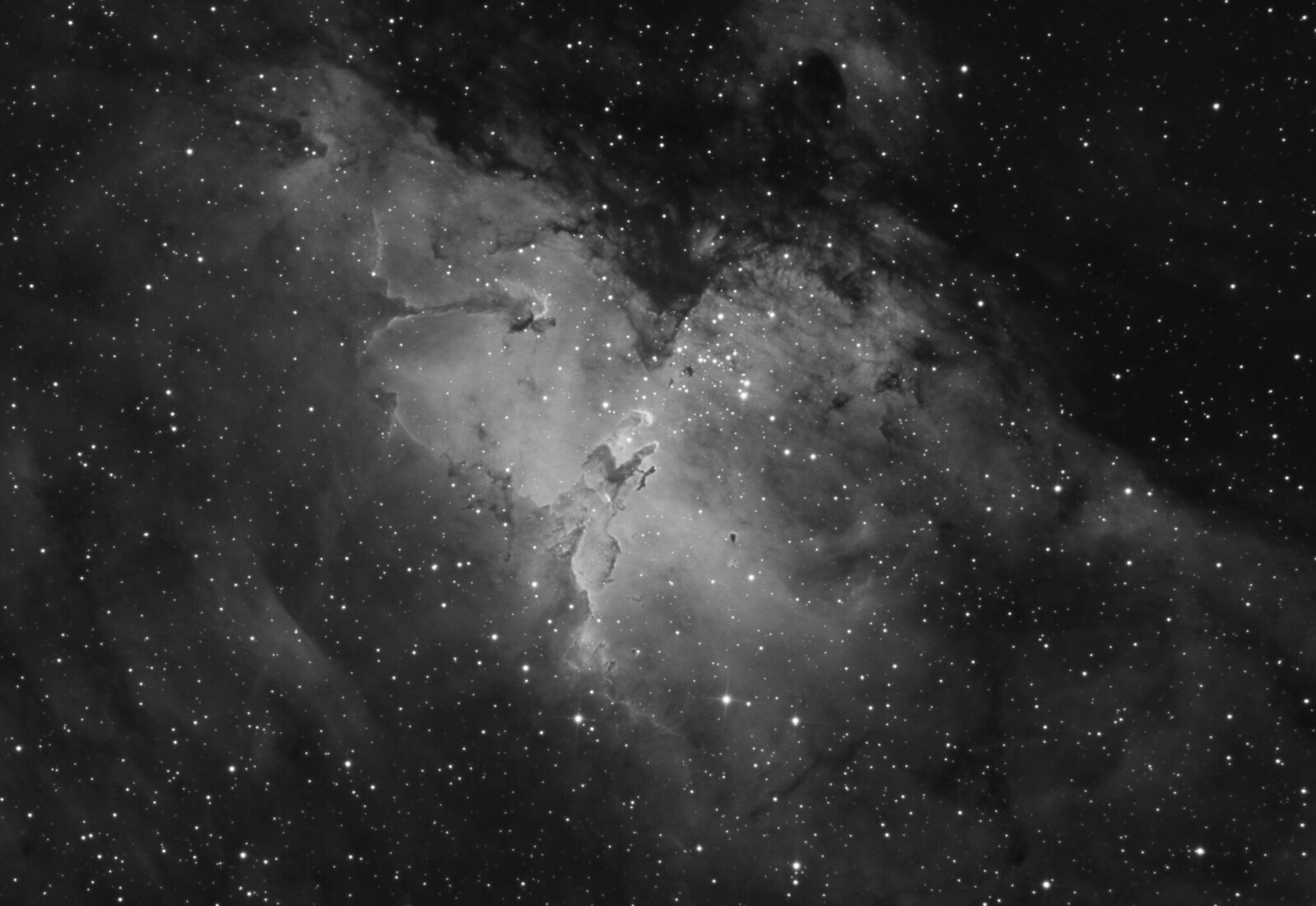
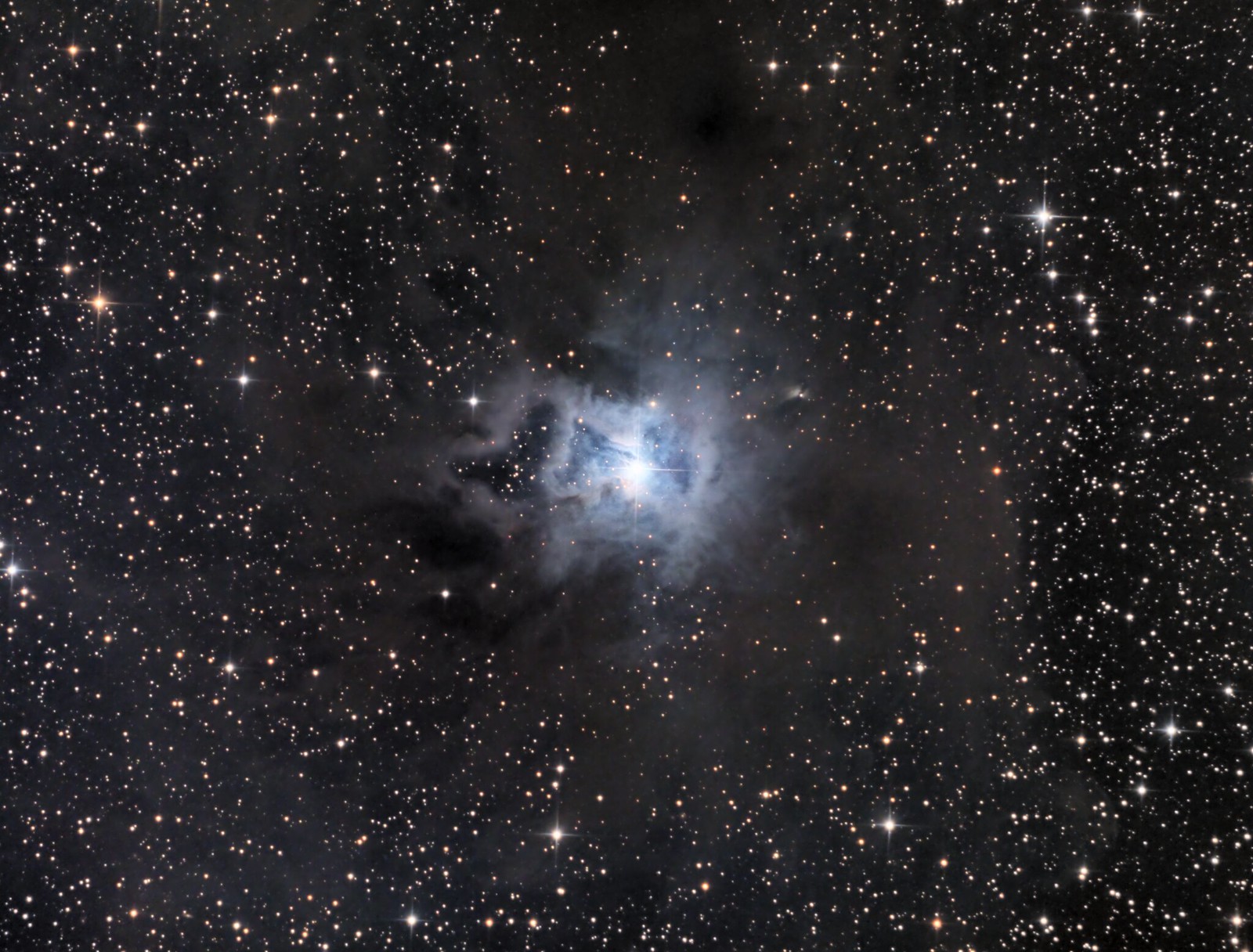


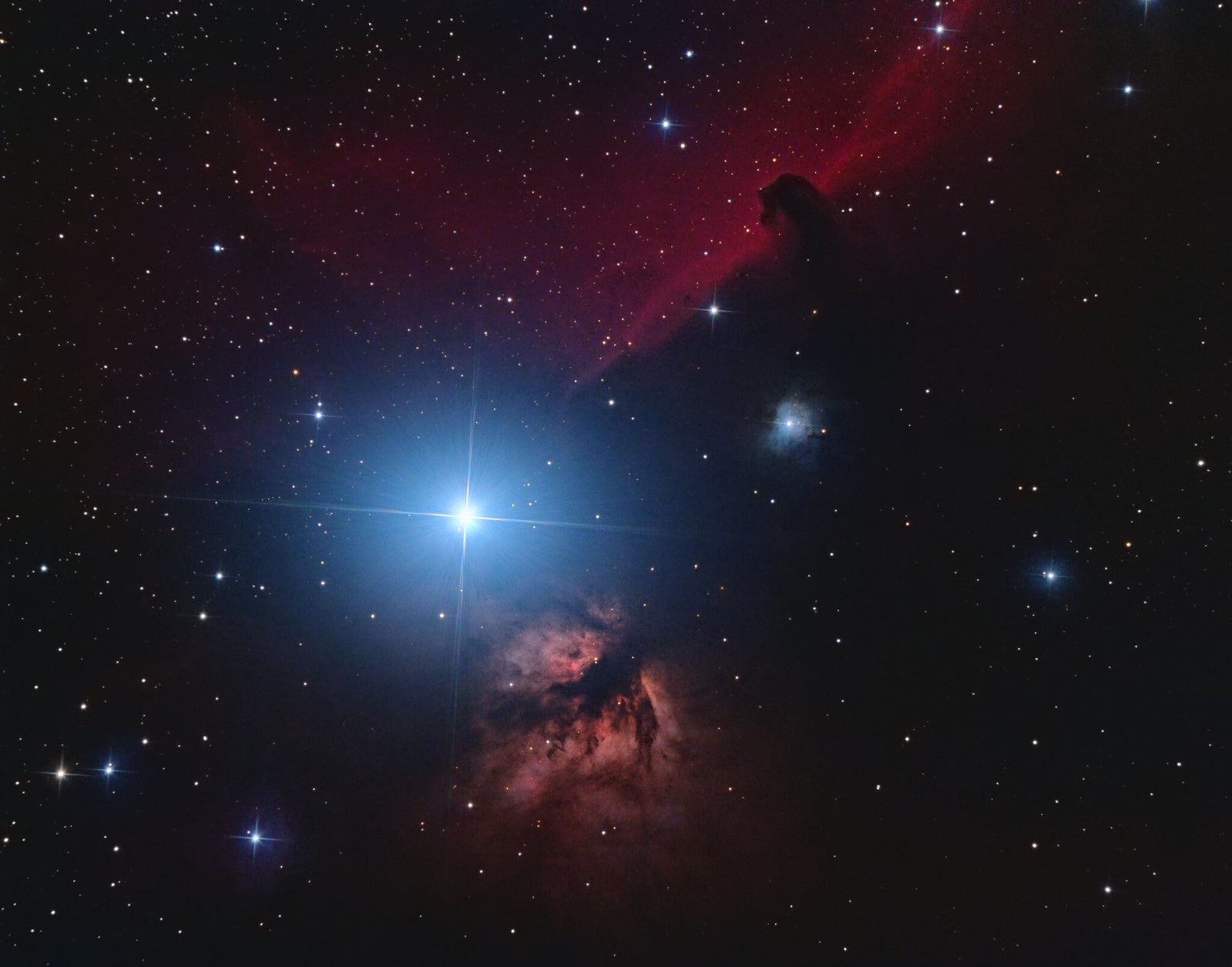
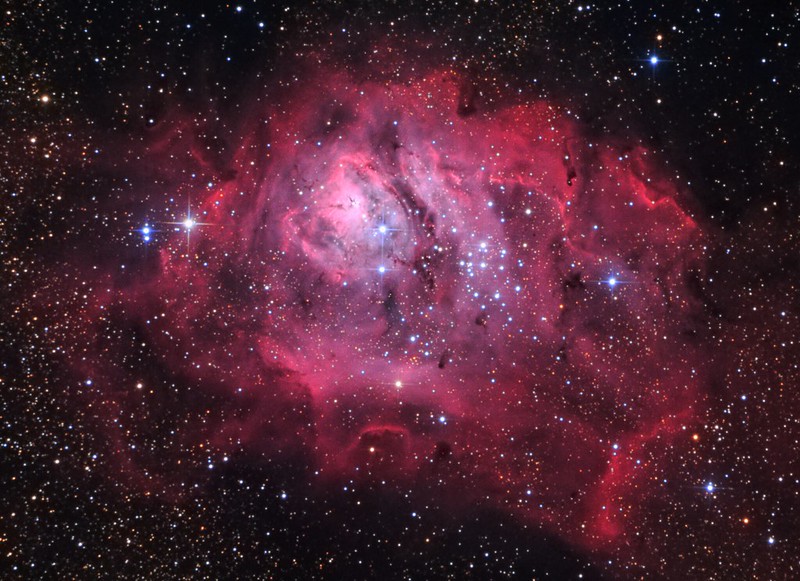
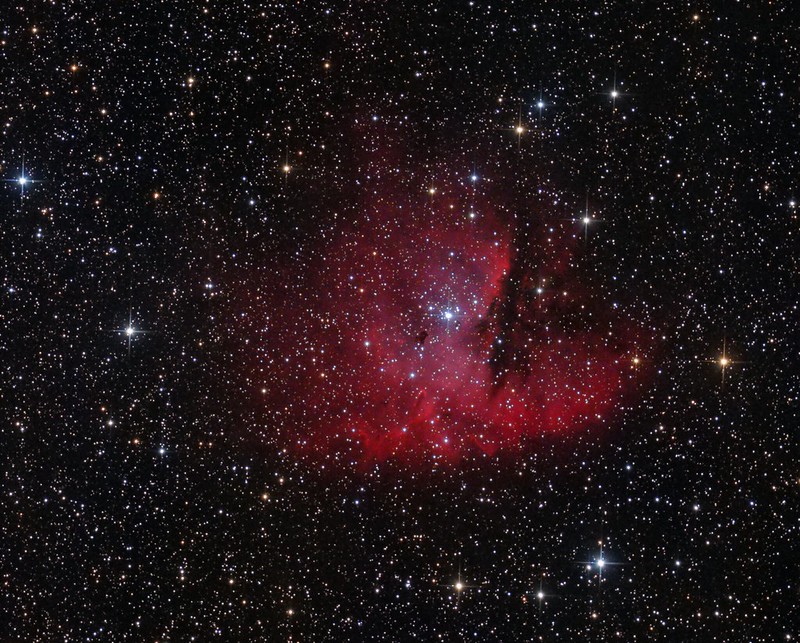
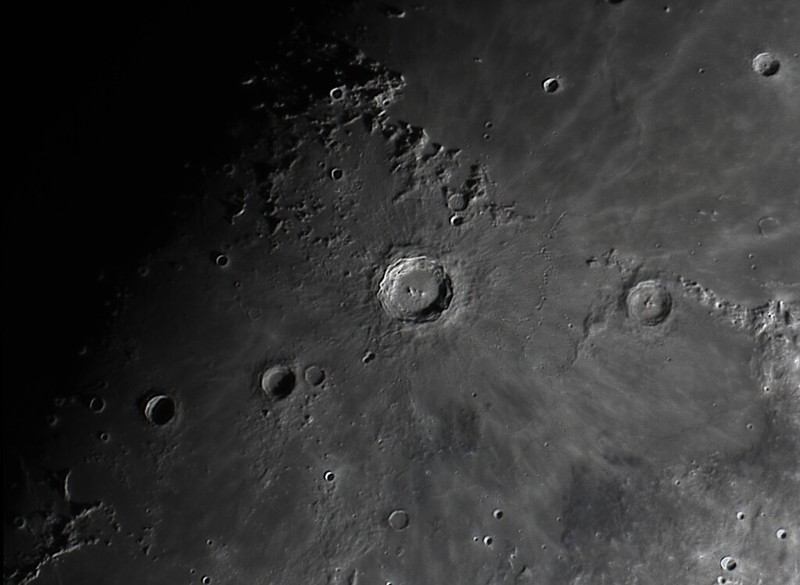
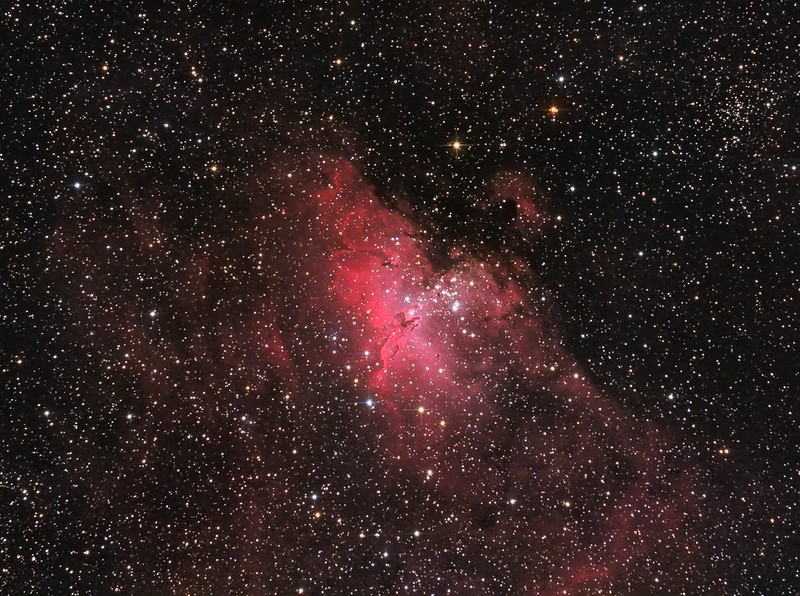


First attempt at SII, Ha, OIII image: Pelican nebula
in Imaging - Deep Sky
Posted
I've just been delving into narrowband processing for the first time too - if you're using Pixinsight, have a look at this tutorial - really nice way to do it and no magenta halos - http://www.arciereceleste.it/articoli/translations/75-narrowband-color-composition-eng